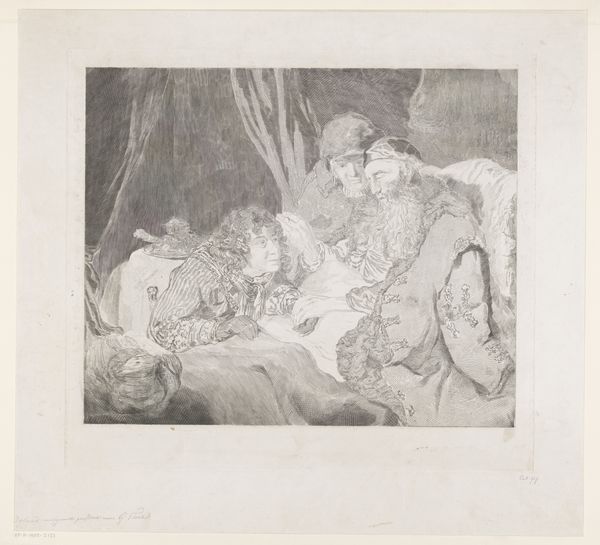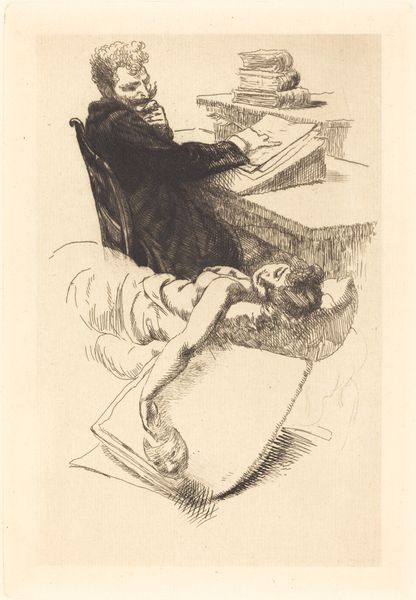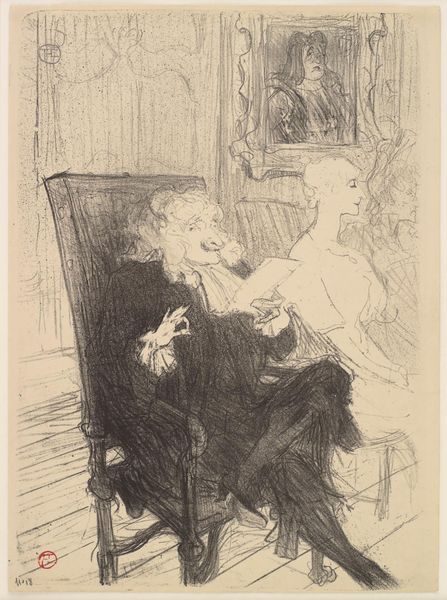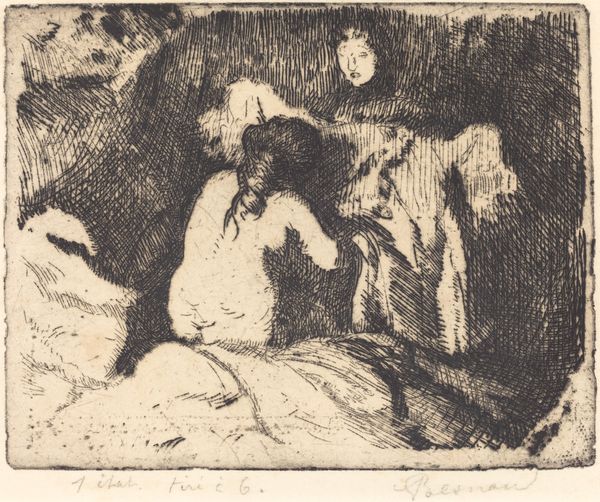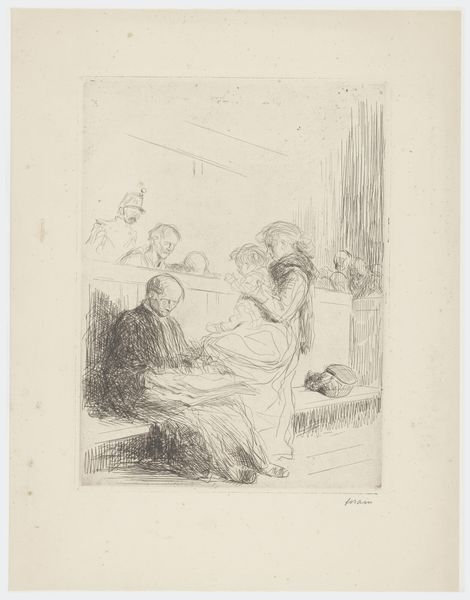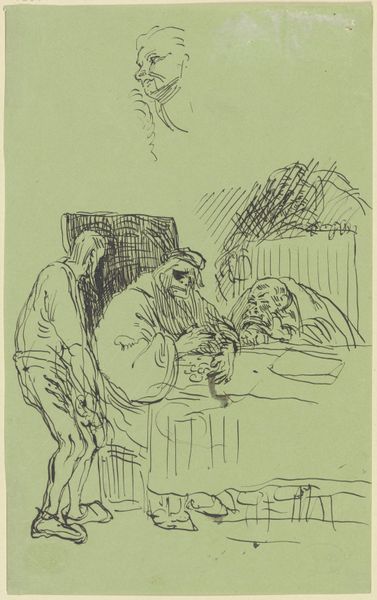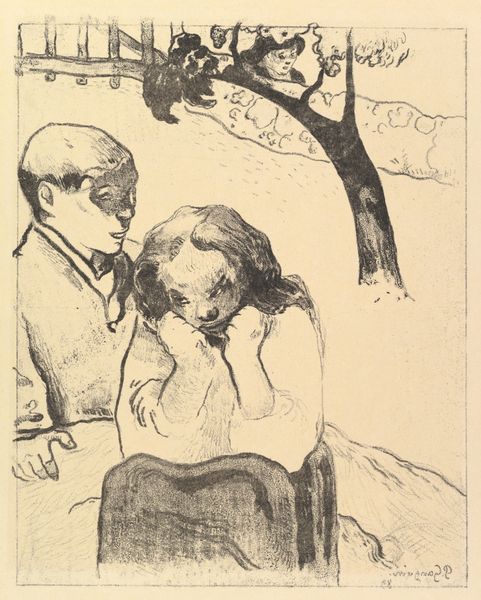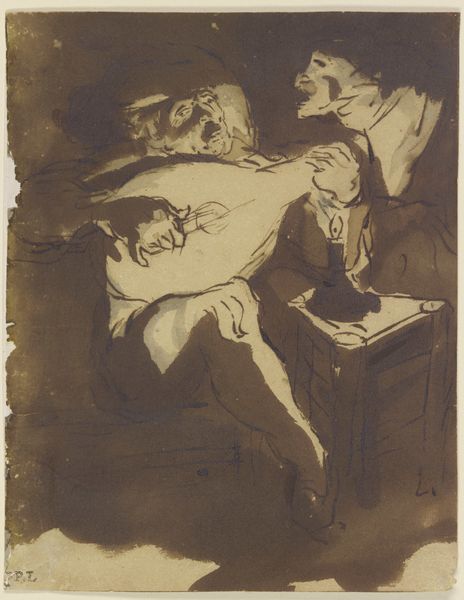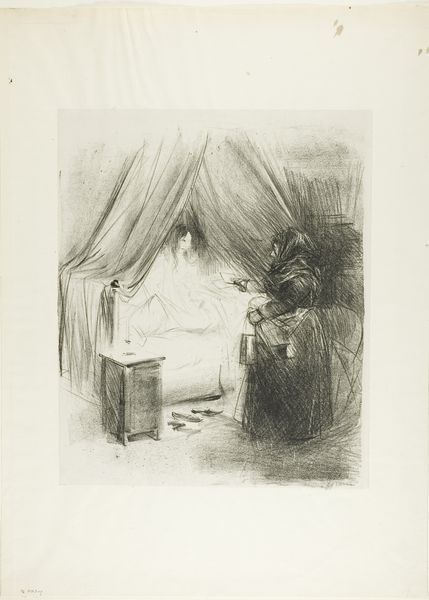
drawing, pencil
#
portrait
#
drawing
#
imaginative character sketch
#
light pencil work
#
pencil sketch
#
cartoon sketch
#
figuration
#
social-realism
#
personal sketchbook
#
ink drawing experimentation
#
pen-ink sketch
#
pencil
#
sketchbook drawing
#
genre-painting
#
storyboard and sketchbook work
#
sketchbook art
#
realism
Dimensions: height 355 mm, width 357 mm, height 32 mm, width 241 mm
Copyright: Rijks Museum: Open Domain
Editor: This is "Hoe armen trekken en rijken getrokken worden" from the 1890s-1900s, by Jan de Waardt, it's a pencil drawing currently held at the Rijksmuseum. It strikes me as a stark visual commentary on social class, like a snapshot of economic disparity. What do you see in this piece? Curator: You’ve rightly identified the socio-economic tension. For me, it's a powerful representation of class struggle at the turn of the century, and de Waardt is using stark imagery to make that struggle visible. Look at the composition – the 'rich' are literally being pulled by the 'poor.' How does that power dynamic speak to you? Editor: Well, it feels...uncomfortable. The people pulling the carriage seem burdened, and the passengers seem oblivious, almost like they're entitled to this arrangement. I wonder if de Waardt was trying to evoke a sense of guilt or responsibility in the viewer? Curator: Precisely! He's forcing us to confront the uncomfortable truth about who benefits from whose labor. This wasn't just about documenting reality; it was about challenging the social structures that made it possible. Consider the social realist movement: it was very popular at the time, and de Waardt situates himself squarely within this critical discourse. Do you think de Waardt has successfully translated the theoretical basis for this view into image? Editor: I see what you mean. The directness of the image makes his social commentary feel immediate, even now. I never thought about art so openly conveying what theorists argue for! Curator: Art holds up a mirror, often distorted, to expose power structures. Thinking of that can prompt meaningful questions. Editor: Definitely gives me a lot to reflect on; I now think the role of art as activist has been seriously understated in the traditional curricula. Curator: That is how historical context allows us to enrich art-making practices and to create something even more meaningful in our current cultural moment.
Comments
No comments
Be the first to comment and join the conversation on the ultimate creative platform.
